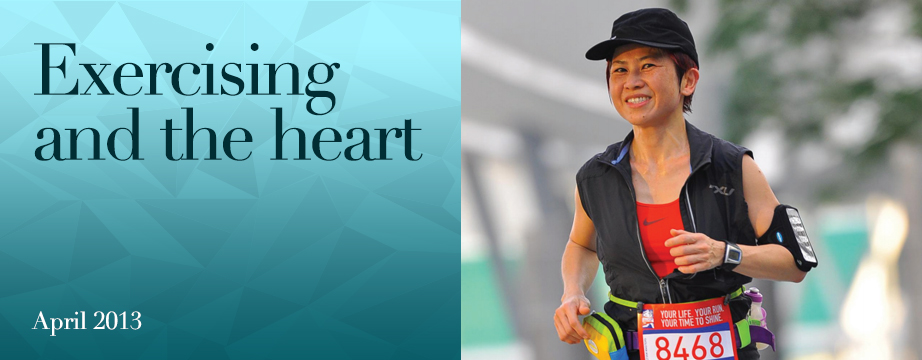
| REGULAR EXERCISE, COMBINED WITH A PRUDENT DIET, ARE KEY INGREDIENTS TO MAINTAINING GOOD health and ideal body weight. Conversely, a sedentary lifestyle and bad eating habits predispose one to obesity, hypertension, diabetes, hyperlipidemia and osteoporosis. This may lead to complications like stroke, heart attack, kidney failure and bone fractures. |
| Should everyone exercise? What level of exercise is suitable and safe? Research shows that any activity is better than none. For most people, light to moderate exercise such as walking, 30-45 minutes at least three times a week is safe and achievable. When trying to lose weight, the intensity of the exercise must be increased in order to achieve adequate caloric burn. For those aiming to improve cardiovascular fitness, even higher levels are needed. It may be necessary to have the heart checked before embarking on intense exercise programs for those with family history of heart disease or those aiming to do endurance exercises such as marathons, biathlons or triathlons. Those with existing heart problems or recovering from heart bypass surgery or heart stents, should check with their cardiologists to determine when and what level of exercise is safe. |
| What is the optimum intensity of exercise? We use a measure called the target heart rate to prescribe exercise intensity. First, a person’s maximum heart rate (MHR) is calculated by subtracting his age from 220. The intensity of exercise is then expressed as the percentage of maximum heart rate to be achieved during exercise. Heart rate can be calculated by taking one’s pulse or counting the number of heart beats in 10 seconds and then multiplying that number by six. An easier way to measure that would be to wear a heart rate monitor during exercise. This usually consists of a chest strap with a sensor, and a watch, which displays the heart rate at any given time. |
| Those who have never exercised before or who are just starting to exercise again after a long period of inactivity should aim for a target heart rate of 50-70 per cent MHR. (eg for someone aged 50, MHR = 170; 50-70 per cent = 85 -119 bpm). If the goal is to lose fat, aim for 60-70 per cent of MHR; For endurance (aerobic zone) training, (long distance running, cycling or swimming), aim for 70-80 per cent MHR. Competitive athletes train at 80-90 per cent MHR or anaerobic zone). The higher the intensity, the more difficult it is to sustain that level of exercise for a long period of time. |
| What are the danger signs during exercise? If you experience chest pain, giddiness, or palpitations during exercise, then stop immediately and consult a doctor as soon as possible. These could be signs of an arrhythmia or a problem with the heart circulation. |
 DR RUTH KAM
DR RUTH KAMCardiologist
MBBS (Singapore)
MRCP (Int Med) (UK)
M Med (Int Med) (Singapore),
FAMS (Cardiology), FRCP (Edin)
Ruth Kam Heart and Arrhythmia Clinic
1 Farrer Park Station Road, #07-11 Connexion
Farrer Park Medical Centre, Singapore 217562
Tel: 6443 0468
www.arrhythmia.com.sg
1 Farrer Park Station Road, #07-11 Connexion
Farrer Park Medical Centre, Singapore 217562
Tel: 6443 0468
www.arrhythmia.com.sg



